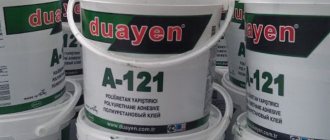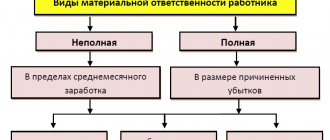Bookmarked: 0
What is a spread? Description and definition of the concept.
Spread is the concept of the difference between the best prices of several orders to sell (called ask) and buy (called bid) in one period of time for a certain asset (which includes stocks, commodities, currencies, futures, options).
Spread is also called:
- The difference in the cost of two different but similar goods that are traded on open markets (for example, the difference in the cost of different grades of oil).
- Synthetic derivative financial instruments, which typically consist of two open positions that have opposite directions and/or different underlying assets and/or different expiration dates.
- Differences in yield levels for different financial instruments.
Exchange practice shows that spreads are measured not in monetary units, but in points. For example, if according to the current quote of Euro against US Dollars (EUR/USD) the data is shown as 1.2345/1.2350, then the spread will be $0.0005 or 5 points. The method of measuring in points helps to better compare the spreads of different trading objects.
To ensure market liquidity, the exchange usually sets a maximum spread size. If this limit is exceeded, trading will most likely be stopped. The liquidity of an asset directly depends on the spread.
In several cases, if one of the market operators is able to provide both buying and selling at the same time, he thus creates a fixed spread, which cannot change depending on the fluctuation of the quote. The higher the liquidity of the market, the more often you can observe the occurrence of a fixed spread. This most often occurs when trading different types of currencies (a fixed difference between purchase and sale prices), especially with regard to intermediaries of the international foreign exchange market. In the stock market, a fixed spread can be found when trading CFD contracts on margin. Most often, an additional clause is made that in some market situations the spread limits may be expanded.
What is a spread in Forex
The word Spread comes from the English "Spread" and has many meanings, including "span", "breadth" or "range".
In Forex, this concept is associated with price.
This refers to the price range, the price range.
Spread in Forex is the distance between the purchase and sale prices, in other words, the difference between the Ask and Bid prices.
Content
- What is a spread in Forex
- Ask and Bid prices
- How to calculate spread
- Spread as a broker's earnings
- Fixed spread
- Floating spread
- Which spread is better: floating or fixed?
- Currency liquidity
- Transaction volumes
- Market State
- Dealing center client status (account type)
- Spread widening
- How the spread is measured - convert points into money
- How to take into account the spread in Forex when opening and closing transactions
- How Take Profit and Stop Loss work depending on the spread
- Are there any brokers without spread?
- Forex brokers with minimum spreads
Ask and Bid prices
The concept of Ask and Bid prices corresponds to the concept of purchase and sale prices.
Screenshot 1. Ask and Bid price
The Ask Price is the minimum price at which the seller agrees to sell. And the trader who chooses the Buy operation pays exactly the Ask price. For him, this is the purchase price.
They also write Ask, which translates from English as “to ask”, “to request”. This is the demand price - the amount that the buyer (demand representative) must spend on the product.
The Ask price is always higher.
Bid price is the maximum amount that a buyer is willing to pay for a currency pair. By clicking Sell, we pay this price.
Bid is translated from English as “offer”. Bid price - offer price. The trader, when selling, is the supply side.
The Bid price is always lower.
How to calculate spread
To calculate the spread value, you need to find the difference between the Ask and Bid prices: from the price with a higher value, Ask, subtract the Bid price, which is lower.
An example of spread calculation, we see the quote for the euro/dollar pair 1.14398/1.14436. 1.14398 - 1.14436 =38
For 1 purchase unit (lot) the spread is 38 points. A pip is the minimum price unit of a currency pair.
Spread as a broker's earnings
When placing any order on Forex, you instantly lose an amount equal to the spread.
Since, when buying, you pay the Ask price, and you can sell at the same rate only with a Bid price, which is lower by the amount of the spread.
This is its essence: a source of income for the broker. It looks like a commission that is automatically withdrawn when opening a position.
This is how the broker makes money.
Spread in market relations
The bid is the monetary value that the buyer of a financial instrument is willing to pay.
Ask is the monetary value at which the seller is willing to sell it.
Spread is the difference between the bid and ask prices.
According to the conditions of market relations, when trading anything, the buyer must name the price at which he agrees to purchase (bid), and the seller – at which he can sell (ask). A striking example of how to properly structure these market relations is market trading at bazaars, when buyers name lower prices and sellers insist on higher prices. Since both parties need to complete a transaction, each of them can only give up a certain limited amount, less or more of which will simply not be profitable for each of them.
So, if we return to the example of a bazaar, which in this discussion can be compared to an exchange, then the buyer and seller continue to bargain. In this case, the seller talks about a higher price, and the buyer talks about a lower price. If one or both parties do not agree to the terms of the transaction, the parties usually disagree. But we will now talk about a different outcome of events.
As trading progresses, sellers may slightly lower their prices, and buyers tend to lower their prices. So, in fact, the terms have not reached full agreement, but the prices offered by both sides are approaching a common point of contact. In other words, the difference between these prices, or spread, narrows. And only if buyers and sellers agree on the price that can be paid and at which the goods can be sold, the transaction can be considered automatically completed.
The above example may be familiar to anyone who has at least once tried to bargain at a market. However, few people sincerely understand that bazaar trading (considered by the masses to be the action of traders from the lowest strata of society) is in fact a fairly striking example of what pure market relations should be, which are a real standard for virtually all countries of the world.
Types of spreads on Forex (characteristics)
The spread on the exchange is set by the broker. Depending on the type of account, the spread for traders may be different.
There are two types of spread:
- fixed;
- unfixed, floating.
Fixed spread
A fixed spread is a spread whose value does not depend on changes in the market.
As a subtype of a fixed spread, there is a spread with an extension. The broker may increase its value without warning. When waiting for significant news, for example.
Floating spread
A non-fixed spread is also known as a floating spread.
Its value fluctuates within certain limits under the influence of supply and demand. The broker sets only the lower value.
For popular pairs, the spread ranges from 2-5 points. When certain news is released, its value can increase by tens or hundreds of points.
Which spread is better: floating or fixed?
You can answer this question by referring to the properties of the spread:
- size: large or small;
- fixity: whether the size is stable or not.
Firstly, a trader is always better off when his costs are lower.
Therefore, it is better to choose a broker with a small spread.
Secondly, when we know in advance our losses from a transaction, this allows us to plan our activities more correctly. This is the advantage of a fixed spread.
That is, the ideal spread is a small fixed spread.
But usually the fixed spread is larger than the lower limit of the floating spread. And floating spread values generally remain low when market volatility is low. In this situation, its value tends to ideal: low and almost stable.
If you prefer careful trading during periods of low volatility and do not trade on news, then a low value floating spread is your option.
Otherwise, it is better to prefer a fixed spread.
This type of spread is more suitable for you when using advisors and robots for trading. Since they do not take into account sudden changes in the market, which with a floating spread threatens losses.
IMPORTANT! The fixed condition does not mean that the spread is always as promised by the broker. During periods of strong volatility, the broker can increase its value so as not to incur losses under the influence of the market.
Spread concept
Spread is one of the most important parameters that professional traders pay attention to in their trading.
And beginners who are just exploring the market may not know this term at all. Having just become a little familiar with the market, some of them may ask: “What is a spread on the stock exchange in general, what is it and do I need it in trading?” But by understanding this definition, you can understand some of the nuances of successful trading.
Translated from English, “spread” will sound like an expansion or a difference. To understand what it is, you need to imagine two counterparties on the exchange: the seller and the buyer.
Each of them submits an application to open a deal that is profitable for him. It is the gap between the best selling and buying prices that is called the stock spread.
To see the spread in the trading platform interface, you need to look into the so-called order book.
The order book is a dynamic table that changes in real time and displays purchase prices - Bid and sale prices - Ask.
The spread is the difference between these values, that is, between the highest purchase price and the lowest sale price.
Spread in the book of Brent oil futures
The gap between Bid and Ask exists in any book. Depending on the selected asset, this value may vary.
This price difference is always paid by the trader. And when planning his profit, he must take into account these inevitable expenses. In the case of liquid assets, the spread is often equal to the price increment.
For illiquid instruments, the difference in best prices can be very high.
As an example, we can analyze Gazprom shares. The screenshot below shows that the best purchase price is 182.47 rubles, and the best sale price is 182.5 rubles. That is, the spread is only 0.03 rubles.
If you study the shares of Qiwi, you will notice that in this case the spread is larger. It is already 1 ruble and often rises to the level of 2-6 rubles.
Although it cannot be said that Qiwi is an unreliable or illiquid company. However, its shares are a less liquid instrument in comparison with Gazprom securities.
What affects the spread size
Factors objectively influencing the spread:
- currency liquidity;
- volumes of transactions performed;
- market conditions;
- account type.
Currency liquidity
Liquidity is the ability to quickly sell something.
By providing trading in certain currency pairs, the broker is interested in profit. If a pair is poorly traded, the supply and demand for it are small, then the broker risks not making money. And he puts more profit into the spread.
Therefore, the spread is consistently lower for popular currency pairs. For exotic ones it can reach dozens of points.
The connection is obvious: higher currency liquidity means lower spread.
Screenshot 2. Currency quotes and their spreads
In this context, the size of the spread is also considered an indicator of market liquidity: higher the spread - lower liquidity.
Transaction volumes
The influence of this factor is similar to the influence of the previous one. If the broker regards its value as carrying risk, he increases the spread. And vice versa.
For small trade volumes, the broker's overhead costs per trade are higher on average. He puts more profit into the spread.
Large transaction volumes are associated with increased risks due to volume. This also increases the spread.
Market State
When talking about the state of the market, I mean the level of its activity. She may be:
- high - then they talk about market volatility;
- low.
The foreign exchange market tends to enter a state of volatility after important news or events. When their consequences can significantly change the value of world currencies. And the market is going crazy with expectations. The spread widens in such conditions.
Dealing center client status (account type)
The type of account you choose also directly affects the size of the spread. Since the broker combines the characteristics of the accounts in such a way as to ensure approximately the same level of profit for all types of accounts.
The main account characteristics influencing the spread are:
- currency and minimum deposit amount;
- leverage;
- maximum volume of one order;
- the maximum number of open orders and their maximum total volume.
If you analyze the interdependence of account characteristics across different brokers, you will notice the following fact.
The broker offers more opportunities and a low floating spread with a high deposit. And vice versa.
See how the spread size of the Alpari broker changes depending on the type of account:
Table 1. Spread size depending on Alpari account type
Spread in exchange relations
Trading on the stock exchange follows a fairly similar scenario. A trader who wants to sell shares or other types of securities probably does not want to sell them at the average market price. In such situations, a trader who wants to buy shares does not express a desire to purchase them at market prices. In such cases, the trader who wants to buy can set his proposed price (bid), and the one who sells can offer his (ask). It can be said that in order to complete a stock purchase and sale transaction on demand, traders must haggle.
Exchange trading occurs through negotiations and reduction of the spread, that is, the difference between the bid and ask prices. If the current market price of a stock is 1 ruble, then it is very likely that the ask price for it will be 1.02, and the bid price will be slightly lower - 0.97. Please note that the bid and ask prices are not much higher or lower than market prices. Accordingly, the bid indicator is lower by 3 kopecks, and the ask indicator is higher by 2.
If the market price of securities rises, the buyer understands that the market situation is changing the conditions for transactions, and can raise the bid, since the seller will have the right to ask for more. If current prices for securities or shares fall, then sellers, under market pressure, will be forced to ask for a lower ask, because buyers will not want to purchase them at an outdated, higher price.
Most often, the difference between the ask and bid prices is very small, and can amount to no more than a few kopecks, cents or other currency. Of course, traders have the right to avoid all the hassle and just conclude a purchase and sale transaction at market prices.
Each exchange instrument has a spread as a value; its size is set by the exchange, which is capable of changing it. The size of this parameter directly affects the liquidity of the market and traded instruments. And in order to prevent the market from crossing a certain liquidity threshold during the day (which could stop trading), the exchange is forced to create some restrictions as costs. And since the spread is a direct loss for traders, if there are too many costs, trading will take place much less actively. The exchange may expand this parameter both when there are too many purchases and when there are too many sales.
By the way, the size of the exchange spread can be measured not in monetary units, but in points.
The size of the spread on Forex varies significantly not only in the process of trading different currency pairs, but also depends on the brokers. Of course, in order to reduce costs, it is important to choose the most liquid currencies. But when choosing Forex dealing centers, it is also necessary to pay attention to the size of the spreads that are offered there. Despite the fact that it is quite stupid to choose brokers solely based on minimum spread indicators. If the costs are too low, this is a reason to think about the quality of services of this exchange, especially if we are talking about far from the most liquid currencies. In addition, it is worth remembering about the swap - the commission for moving a position overnight. In addition, trading is profitable only as long as the cost depends on the size, and some of the Forex brokers are ready to provide a spread return service.
How to find out the spread in Metatrader MT4
To know the spread for all currencies at once:
- Right-click on Bid and Ask in the currency overview window.
- Select "Spread".
- You can see the spread in the column that appears.
Screenshot 3. How to enable the display of the spread in MetaTrader Screenshot 4. Display of the spread in MetaTrader in the market overview window
Another way to always know the current spread in MetaTrader MT4 is to use an indicator that will display the current spread of this particular pair on the chart.
To do this you need:
- download indicator archive;
- unzip it into MetaTrader: MetaTrader 4 MQL4Indicators;
- After restarting the terminal, drag the Spread_indicator indicator file from this folder onto the chart for the desired currency pair.
Screenshot 5. Spread indicator
You can also find out the spread for a specific currency pair from the specification of a trading instrument:
- In the market overview, select a pair and right-click
- Select "Specification"
- If the spread is fixed, you will find its value here. If floating, then “floating” will be written.
Screenshot 6. Spread in the specification of a trading instrument in MT4.
This can be done similarly in the mobile version of the MetaTrader terminal:
- Select “Quotes”
- Click on any pair and select “Properties”
- Watch "Spread"
Screenshot 7. Spread in the review of trading instruments in mobile MetaTrader
Screenshot 8. Properties of the trading instrument in the mobile terminal
Screenshot 9. Spread in the specification of a currency pair in the MT4 mobile terminal
Are there any brokers without spread?
You can find a Forex broker without a spread, but there will be some exceptions. The broker still has to make money somehow and he will find other ways to do it. For example, it will make large price slippages.
There may be one-time promotions that make it possible to trade with no spread on some days on some pairs. But there is no point in taking such actions seriously.
For example, the Alpari broker has a bonus system that allows you to partially return the spread, but again you cannot make any big money from this.
Related posts:
- Bid and Ask prices on the stock exchange - what are they?
- What is a spread return and how to get it
- Types of orders on Forex - examples
- Review and reviews of the broker Alfa Forex
- Review of Forex brokers 2020 - list of reliable and verified
- How to make money on the difference in exchange rates
- Depth of Market - examples and how to interpret it
- Blue Chip Stocks - What are they?
How the spread works
Spread widening
This means that when important news is released, the broker can, protecting its interests, increase the spread.
How the spread is measured - convert points into money
Price and spread changes are measured in Forex in points (or pips).
To calculate the cost of one point in US dollars, use the formula:
Point price = (Lot * Point) / Quote currency rate to US dollar.
The lot size in this case is also measured in dollars.
Let's take the EUR/USD currency pair. With a lot of 100,000 dollars. the cost of a point will be 1 dollar:
Point price = (100000* 0.00001)/1=1 dollar.
What is the essence of the spread?
The minimum spread on the sites is set by the market maker; in the further chain to the final trader, the spread increases, because is also income for dealing centers and brokers in the form of a commission for each transaction.
The size of the spread is a criterion of market liquidity; the higher its value, the correspondingly less liquidity. This is actually why the spread is small when trading popular pairs. For example, when opening an order for the euro/dollar pair, we see quotes of 1.0931/1.0933. The spread value for 1 lot is two points (or $20).
Spread in EUR/USD pair
When opening any transaction, the trader immediately receives a loss equal to the spread value. For example, if you open a long position of two lots in the euro/dollar pair with a quote of 1.0931/1.0933, then the initial loss will be $40 (2 spread points x 2 lots).
For this transaction to cross the break-even point, quotes must change in the direction of the transaction by at least 2 points. Accordingly, to generate income - even more.
The spread can be compared to a commission, which is automatically withdrawn when opening trades. For an honest broker, the spread is the main source of income. By the way, on stock exchanges, in order to regulate market liquidity, spread limits are set: if its maximum value is reached, then trading automatically stops.
The concept of “spread” can also be used to refer to the difference in yield levels on financial instruments.
Impact of the spread on trading
The spread value directly affects the trader's future expenses when trading.
And you need to take it into account when placing orders and when creating Take Profit and Stop Loss stop orders.
How to take into account the spread in Forex when opening and closing transactions
If there is a spread, the transaction will bring profit only when the price movement in the direction we need exceeds the spread.
That is, when buying, selling at a higher price will bring us profit. But the price increase must be higher than the spread. Why?
The purchase is made at the top price: the Ask price.
To make a profit, it is necessary that the subsequent sale price of the Bid (the value is less) at the time of closing the position is higher than the current Ask.
If a currency pair is not very liquid and the spread is very high, then when placing a buy order we need to be firmly confident that the trend will not let us down. And the price will still cross the height of the spread. Otherwise we will suffer losses.
When selling, we wait for the price to fall so we can buy cheaper. Therefore, the future Ask price must be lower than today's Bid price.
Sometimes it may seem that the spread is a small value, but for example, if you are a scalper, then the spread takes the lion's share of your income.
How Take Profit and Stop Loss work depending on the spread
Accounting for the spread in Take Profit and Stop Loss depends on the type of order: buy or sell.
REMEMBER! If we open a deal at the Ask price, we close it at the Bid, and vice versa.
When placing TP and SL, also remember at what price they will work.
For example, by placing the TP level clearly below the level, you can see that the desired price simply did not reach there.
The Ask price could have reached the level, but the Bid did not reach the level and your order was not closed at Take Profit.
This can be abused by unscrupulous brokers by widening the spread.
The same is true with Stop Loss only in the opposite direction: the current price minus the amount of losses that you agree to in this operation - minus the spread.
How it works:
With a spread of 20 pips, you set the TP and SL to 150 pips. When Take Profit is triggered, your profit will not be 150 points, but 150-20 = 130 points.
When Stop Loss is triggered, the size of the spread will be added to our allowable loss of 150 points: 150+20=170.
This is how, with the same movement of 150 points, the profit is always less than the loss!
Commission
At some Forex brokers you can see bright signs - almost zero spread or even no spread at all. But if you delve into the details, it immediately becomes clear that trading half a point in plus on each minute candle will not work, since the trader will still have costs.
The fact is that there are two types of spread formation on ECN accounts. The first is essentially the most common spread; its value is usually slightly less than on standard or “classic” accounts. The second type is a really very small spread (on the Eurodollar 0.2-0.5 points), to which a turnover commission is added. That is, each transaction is accompanied by a write-off of funds directly proportional to the number of lots. All these nuances can be viewed in the trading conditions on the broker’s website. The most important thing is that you need to calculate the total costs.
The commission value is indicated in the account history, as well as in the “Trade” tab
It may turn out that using an account with a commission already taken into account in the spread will be more profitable than paying both the spread and the commission separately. Typically the commission is in the range of $8-20 per lot, which adds 0.8-2 pips to the spread on the transaction. Thus, the total costs will be 0.2-0.5 base points and 0.8-2 additional points as commission (although this is for two transactions at once - opening and closing), which gives a total of 0.6-1.5 point. And these are values comparable to a regular spread on an ECN account.
So you need to carefully study the information on the accounts and estimate. A difference of even half a point over time will take up quite a bit, especially if short-term trading is practiced with a large number of open positions. To accelerate the deposit, it is better to definitely choose the option that will have as few costs as possible, because the volume of the working lot will be very large and will make up a significant percentage of the entire balance, so every point in the account, costs need to be minimized.
On CFDs, the commission is usually fixed, but they may or may not have a spread; everything is different for each broker. The most popular indices and stocks, as well as popular commodities, usually offer spreads and commissions that are quite comparable in value to the most liquid currency pairs. This significantly increases the total number of instruments for trading with adequate conditions.
In general, the spread on Forex shows well the attitude of the broker towards the client - if the values are huge and there are also slippages, a slow speed of order execution, then it is better not to trade with such a company. If the spread is of normal size, then we look at the other parameters. Some use fairly large values even for the euro/dollar, but at the same time they give instant execution. That is, everything here is individual, and you need to select it for yourself, while you should minimize your fixed costs for each transaction by choosing the optimal conditions.
Example of trading conditions for different types of accounts
The commission, unlike the spread on Forex, usually does not change and is a fixed value, expressed in a certain amount per lot. This means that, let’s say, for opening a transaction with this volume, for example, 8 dollars will be written off. Accordingly, when opening a transaction for 0.1 lot, 0.8 dollars or 80 cents will be written off. However, the commission may vary. Moreover, for the better if the broker provides for a decrease in its indicator depending on the trading turnover. That is, conditionally, the first 100 lots per month will be accompanied by a commission of $16 for a full transaction (opening and closing an order for $8), and the next 100 lots will come with a reduced commission, for example, $12 for a full transaction. This is also usually stated in the broker's trading conditions.
Some companies provide a variety of bonuses that can be received under certain conditions. A good example is the Alpari company with its Alpari Cashback loyalty program. For trading and replenishment, special points are awarded, which can also be spent on improving trading conditions. Two of them directly relate to trader costs. You can reduce the spread by up to 25%, that is, the company will return to your account an amount equal to a quarter of the cost of the spread for the past week, if such an option was activated. There is a similar system with a commission on an ECN account; you can return up to 30% of the costs for it.
At first glance, this may not seem very interesting, but with a large number of transactions and using a short-term trading strategy, you can later be pleasantly surprised when you receive a significant amount just like that, out of nowhere.
Comparison of spread sizes for TOP brokers in points
Are there any brokers without spread?
There are brokers that offer spread-free trading. Their earnings are in the commission they take from each transaction. It is easy to compare such brokers by comparing the commission sizes.
ATTENTION! A broker offering a spread-free account may set a high minimum deposit amount.
Here are several brokers offering accounts with a floating spread from 0:
- RoboForex in ECN-Pro and PRIME accounts
- Gerchik&Co for all accounts except Mini
Forex brokers with minimum spreads
If you choose not a commission, but a spread, then it is better that it be minimal. Here are a few brokers with minimal spreads:
| Broker name | Spread size |
| Alpari | floating - from 0.1 fixed - from 2.0 with commission floating - from 0 |
| Weltrade | floating with commission - from 0fixed - from 1.9floating - from 0.5 |
| RoboForex | floating - from 1.3 fixed - from 2.0 |
| Gerchik & Co | floating - from 0 |
What is the difference between spread and commission
The spread, as I wrote above, changes depending on market fluctuations and the broker’s risks. We studied its influence on trading and accounting in strategy.
Commission is a fixed fee to the broker for each trade. It is not shown in the price.
If the price moves in a favorable direction, the transaction can be closed immediately. And make a profit. Since you have already paid the commission. There is no need to wait for the spread level to exceed. Easier to strategize.
The disadvantage of the commission is also that it is fixed. With a low floating spread, you would save on certain transactions compared to the commission.
In the terminal, you can see the commission in the trading tab.
Screenshot 10. Commission in the MetaTrader terminal
Types of Spreads
Most brokers that offer their services online operate under the Market Maker model, meaning that they create and want to provide the highest possible liquidity. Market Maker brokers are different in that they often offer both floating and fixed spreads.
Floating spread
This option is probably the most frequently chosen by clients. Spreads vary depending on market conditions. For example, during times of high liquidity, when the European and American sessions overlap, the EURUSD spread is much lower than during the Asian session. In turn, spreads are wider during periods of low liquidity, that is, after the closure of financial centers in New York and before the opening of Asian markets. The spread can also be widened significantly before/during major market events.
Fixed spread
Spreads are kept at the same level, regardless of market conditions. In general, a fixed spread is wider than a floating spread because the broker has to take the risk of holding it throughout the day, even in markets with high volatility and low liquidity where interbank spreads are more likely to widen.
The choice between a floating or fixed spread depends primarily on your trading style. One of the most difficult elements to calculate when creating a trading strategy is the slippage that can occur when trading currencies.
For example, if you are using scalping strategies and are trying to make a small amount on each trade, you should deal exclusively with fixed spreads.
Short-term traders typically choose floating spreads due to their narrow range during periods of greatest liquidity in the market. They are also believed to reflect the true nature of the market. On the other hand, traders who base their decisions on fundamentals may choose a fixed spread, which will protect them from possible widening in the periods leading up to important macroeconomic events.
Some brokers offer tighter spreads to clients with larger accounts or those who trade more. Others offer the same spread for all categories of clients.]]>
What is a spread return?
When trading through some companies, a trader can receive a return of the spread - a rebate.
This service is provided by rebate services.
It works like this:
The rebate service acts as an intermediary between the broker and the trader.
He is looking for clients for a broker. The trader cooperates directly with her, she with the broker.
For the attracted client, the service receives a reward from the broker: part of the commission and spread charged to the trader.
Of this remuneration, part is paid to the trader in the form of a return of the spread. The more transactions a trader performs, the more spread he gets back.
Read more about what a rebate is, how much you can earn from it and what service I work through in this article.
IMPORTANT! The percentage of spread return, as well as the percentage of commission returned by the broker to the intermediary, may differ.
Let's summarize. From this article, you learned what a spread is, what types there are, and how it affects your trading and profits.
You have taken another step towards the state of “Successful Trader”.
Share or save:
- Telegram









